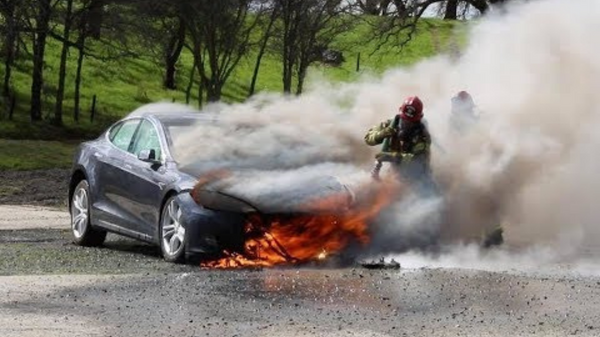By Mandy Gunasekara
The Biden administration released new emissions control standards for vehicles. Billed as the “most ambitious climate regulations” ever, they have captured headlines, but technical realities and high costs have both rules headed straight for a brick wall.
The light-duty category covers cars, trucks, and vans, and requires 67% of all new car sales to be electric by 2032. The heavy-duty category covers 18-wheelers, buses, and other work-related vehicles and requires half of new buses and a quarter of new truck sales to be electric by 2032. For comparison, last year, electric vehicle sales made up 5.8% of new car sales and less than 2% for heavier trucks. These proposed standards are not ambitious but rather represent a new level of regulatory lunacy.
The Clean Air Act (CAA) requires the EPA administrator to set vehicle regulations aimed at reducing pollutants from light-duty vehicles that negatively impact public health and the environment. In setting these standards, the administrator must take into consideration the feasibility of new technologies as well as costs. Team Biden promised as much when they committed to establishing a “data-driven” goal. But it’s hard to see how any serious expert would support the notion that, in less than five years, when car companies will begin designing the model year 2032 vehicles, they can develop enough electric vehicles, procure the massive amount of critical minerals needed for the batteries, and convince skeptical consumers to massively shift their purchasing priorities to meet this goal.
Despite numerous federally sponsored incentives, electric vehicle adoption rates remain low for a variety of reasons. Even with major advancements in EV technology, recharging batteries still takes hours, while filling up gas tanks takes minutes. Coupled with a limited network of charging stations, EVs continue to be a hard sell. Even the majority of current EV owners still rely on gas-powered vehicles—78% own a second gas-powered car to supplement their transportation needs.
Future demand isn’t there either. A new AP-NORC poll found only 19% of Americans are “very likely or extremely likely” to go electric. Gallup similarly poured water on the enthusiasm claim, suggesting Americans are “slow to adopt electric vehicles.” More troubling for EV backers: Even if this push was possible, the U.S. Energy Information Administration (EIA) forecasted just 9% of U.S. vehicles would be electric by 2050.
The administration displays tone deafness by touting expensive alternatives to reliable gas-powered cars. Many Americans are struggling to afford eggs and meat in the inflationary economy. It’s highly unlikely lower and middle-income folks are planning to purchase a car with an average cost of $54,000. The availability of taxpayer subsidies doesn’t change that equation. To date, most EV drivers are in households that make at least $150,000 per year or more. In states like Mississippi, where the median income is around $50,000, EVs are cost-prohibitive and regulations like the proposed Biden standards will only make those costs go up.
One of the nation’s leading auto manufacturing groups called the proposal “aggressive” and “unprecedented” even for them—suggesting the administration is going too far too fast. Their statements should be heavily considered given the industry has already invested billions to expand vehicle electrification. Although the industry has adopted the transition narrative, they are rightfully concerned with the expedited timeline and unrealistic expectations in the current proposal.
Despite serious technical hurdles and overwhelming preference by consumers for gas-powered vehicles, Team Biden seems done with the carrot approach and is using a regulatory stick to force its all-EV future on Americans. The courts may once again be the saving grace.
Critics have an opportunity to present legal arguments against the EPA. The biggest legal elephant in the room is the West Virginia v. EPA decision that invoked the “major questions” doctrine. Specifically, the Supreme Court made clear that agencies must point to “clear Congressional authorization” if they take actions of “vast economic or political significance.” One can argue in this instance that the EPA does not have the ability to restructure the entire transportation industry in the same way the agency did not have the ability to redesign entire energy markets in the West Virginia case.
The current rules, as proposed, have numerous technical and legal vulnerabilities. They also stand to undermine environmental progress as Americans will undoubtedly settle on driving older cars longer instead of amassing serious debt to acquire a new, less reliable car. As a result, the reach of new technologies and the affiliated benefits such as reduced pollution and safer roads will fail to materialize.
Mandy Gunasekara is the director of Independent Women’s Forum’s Center for Energy and Conservation and previously served as Chief-of-Staff at the U.S. EPA. Follow her on Twitter at @MississippiMG
Originally published by RealClearEnergy. Republished with permission.
To read more about new emissions standards, click here.
To read more about Biden’s EV push, click here.


























